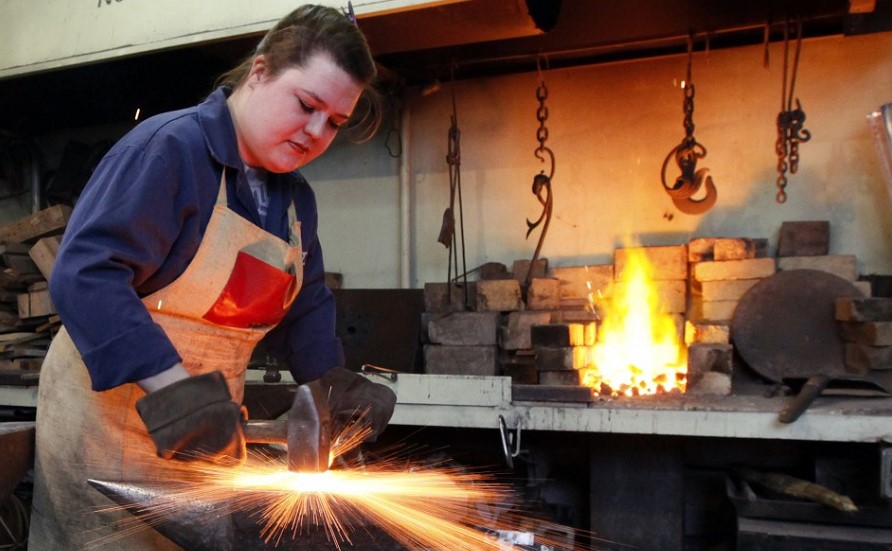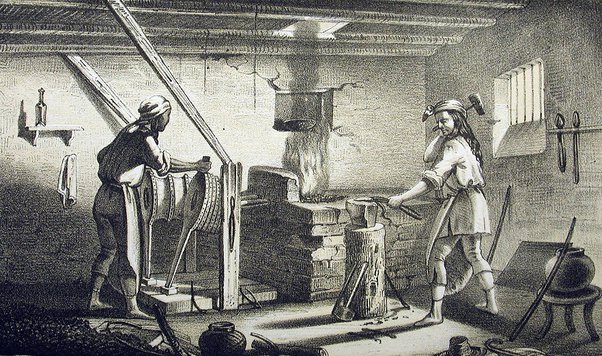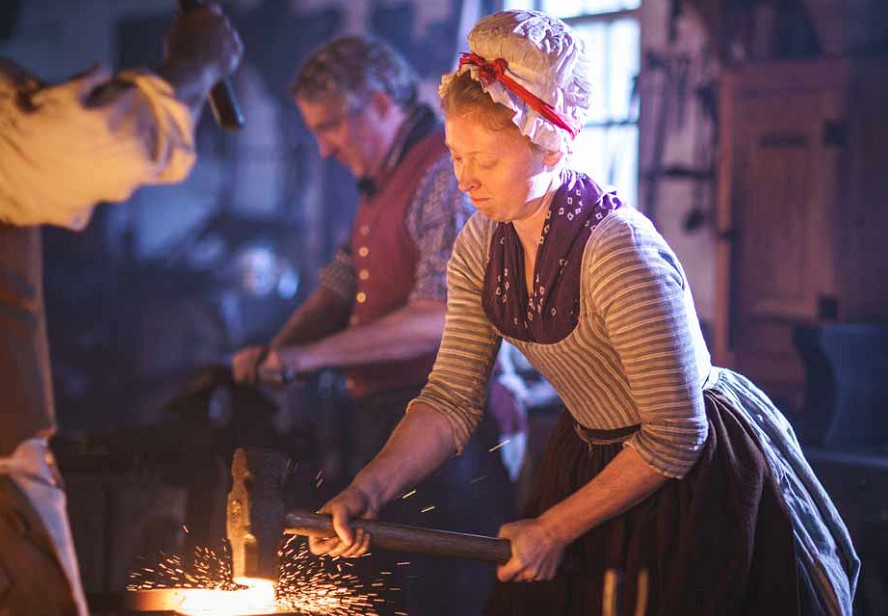When the idea of blacksmithing comes to our mind, most often we remember the image of general laborers – men. After all, since ancient times it was considered a man’s, difficult job. Due to the images in films, cartoons, and historical tapes, the art of a male blacksmith has formed in our heads, that is, this profession is interpreted as a profession exclusively for men.
There is some truth in this because most of the blacksmiths who worked at that time were men. But, oddly enough, there were large-scale exceptions, women all over the world have been doing this for hundreds of years.

Contents
Female blacksmiths throughout history
Blacksmithing is often associated with hulking fathers laboring under dirt and dust.
A misunderstanding was created about blacksmithing because of biased historical information Blacksmithing is often depicted as only a profession of men.
Regardless of whether they were the blacksmith guilds or not, women have been working as female blacksmiths for many generations to this day and have also worked with metal workers throughout the world.

Female blacksmiths of the middle ages
For a long time, women were blacksmiths and most early documents date back to 800. As early as the middle ages blacksmith guilds invited widowed wives of craftsmen to run the family business at their husband’s expense.
There are several major documents that show that female blacksmiths were present during this timeframe.
The Holkham bible from the 1400s Holkham bible consists of a picture of women forging nails (above).

Female blacksmiths in the 18th century
In more far-off history, women also found work as apprentices, and Smiths at the dawn of the industrial revolution at the end of the 18th century ushered in a new era of work. Whole seven cities were moving around and connected to thousands of people who worked at factories and other industrial enterprises.

Most women continued to work at home as widowed wives and mothers, but others decided to contribute to the families’ income by working from home.
By the 1700s, most women in London were allowed and encouraged to learn the craft. In the middle of the XVIII century in the city of blacksmiths Birmingham, England, women forged nails.
Moreover, in several large areas of production, female nailers outperformed their male counterparts.
A woman blacksmith named Elizabeth Brim worked at Blenheim Palace in Oxfordshire and was known as a master at making instruments for nursing the sick. Another famous woman who was working in such and other trades at that time was Betsy Hager, who repaired antique muskets for soldiers who participated in the American Revolutionary War.
Although more and most women were being hired for blacksmithing and other productive work, the number of female apprentices was still very small. Many women learned this craft from their fathers, besides fathers it may be male family members.

Blacksmithing and women today
Thanks to the presence of the most female blacksmiths in the history of mankind, many women today are successful and talented professionals in the metalworking industry. Women blacksmiths are not as large as they once were, but the number of those working in the industry is still relatively small compared to men.
One of the most successful women smiths is Caitlin Morris. She runs a blacksmithing school in Frederick, Maryland, called the “Miss Caitlin Blacksmithing School”, known for more than 10 years of experience and rigorous training. Morris has organized dozens of classes for children and twins and has held various classes around the country.
There is a renowned Mexican blacksmith with over 40 years of experience and a former president of the ABANA (The Artist-Blacksmith’s Association of North America). In 1998, he was awarded the title of professor and the Alex Beeler Award by ABANA, which is the most prestigious award of its kind.
Female blacksmiths in modern times face their own problems, but they are well-known thanks to their hard work and innovations in the industry blacksmithing department.
The modernization of blacksmithing from the Middle Ages to the present day has always had a place for most women forging nails.

FAQ
Are there any female blacksmiths?
Around 60% of blacksmiths are women, compared to 20% of men. Blacksmithing has been a very popular profession for men throughout our history, but even more, women forging nails are blacksmiths.
Who was the most famous female blacksmith?
The most impressive blacksmith is Lilyn Paderner from Wales, who fought against humans until the age of 70. She grew from six feet tall and went on to run a pub, entertaining drinkers with her large harp-playing hands, and was also an excellent shopper and cobbler.
Who was the legendary female blacksmith?
Betsy Hager was a noted blacksmith who often refurbished antique muskets for soldiers. In some cases many women are blacksmiths, but such women are the exception.
Who was the first female blacksmith?
This story provides a deeper and more interesting insight into Annie Jackson Williamson, who started and grew up working for Jack Williamson. Avril Wilson, Daily Telegraph, 17 August 1922.
Conclusion
In this article, we met female blacksmiths, learned their names, how they lived at that time, and what their merits were.


